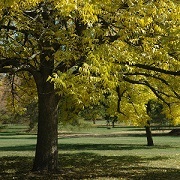Category: Endangered Plants
-

Researchers Apply Microbes To Save Endangered Plant
Transplanting wild microbes from healthy related plants can make a native Hawaiian plant healthier and likelier to survive in wild according to new research. (Click on title for full story.)
-

When Is Enough, Enough? An Approach To Evaluate Alien Plant Invasions And Native Species Decline
Plants comprise the biggest and best-studied group of invasive species. There is a growing debate; however, regarding the nature of the alien plant threat—in particular whether the outcome is likely to be the widespread extinction of native plant species. The debate has raised questions on whether the threat posed by invasive plants to native plants has been overstated. We provide a conceptual framework to guide discussion on this topic, in which the threat posed by invasive plants is considered in the context of a progression from no impact through to extinction. (Click on title for full story.)
-

It Takes A Village With Some Self-Interest To Save A Rare And Endangered Tree In Vietnam
“The success of the project comes down to the trust and understanding we have developed with local people. By helping to establish local village nurseries, we have helped people to grow and replant a variety of trees that complement and add value to traditional ways of life.” (Click on title for full story.)
-

Saving Endangered Plants: Botanic Gardens Hold 41% Of All Endangered Plant Species
The world’s botanic gardens contain at least 30% of all known plant species, including 41% of all those classed as ‘threatened’, according to the most comprehensive analysis to date of diversity in ‘ex situ’ collections: those plants conserved outside natural habitats. (Click on title for full story.)
-

North America’s Ubiquitous Ash Trees Declared Endangered
Five of the six most prominent ash tree species in North America enter The IUCN Red List as Critically Endangered – only one step from going extinct – with the sixth species assessed as Endangered. These species are being decimated by the invasive Emerald Ash Borer beetle(Agrilus planipennis). Three of them – Green Ash (Fraxinus pennsylvanica), White Ash (Fraxinus americana) and Black Ash (Fraxinus nigra) – are the country’s most dominant ash trees, comprising nearly nine billion trees in the forested lands of the contiguous U.S. (Click on title for full story.)
-
Reconsidering The Value Of Alien Plants When Native Ecosystems Are Too Degraded
“Conservation practitioners are investing millions of dollars to eradicate invasive species, but what if some of those invasive species are actually benefiting native species and ecosystem services? Our experimental study shows for the first time that this can be the case.” (Click on title for full story.)
-
Long Buried “Ghost Ponds” May Hide Extinct Plant Species
“Given the range of different seed types that we found capable of germination after 150-plus years, it could be reasonable to expect that ghost ponds could provide suitable reservoirs of rare or even extinct species,” (Click on title for full story.)
-
Is Every Endangered Plant Species Worth An All Out Conservation Effort?
One in five of the world’s plant species is threatened with extinction, according to the annual State of the World’s Plants report from Royal Botanic Gardens, Kew. That’s a lot of plants that need tender love and care – and money – to keep them from going extinct. (Click on title for full story.)
-
Watching The Lights Go Out On Extinct Species: The Botanist’s Burden
Let’s say for 20 years you’ve been observing a tree on a fern-covered crag thousands of feet above sea level on an island in the Pacific. Then one day you hike up to check on the plant and find it dying. You know it’s the last one of its species, and that you’re the only witness to the end of hundreds of thousands of years of evolution, the snuffing out of a line of completely unique genetic material. You might have to sit down and write a poem. Or at least bring a bit of the dead plant to a bar and raise a beer to its life. (Click on title for full story.)
-
What Happens After Invasive Plants Are Eradicated? It Will Never Be The Same
By the end of the three years of the study, the plant community in the plots where stiltgrass had been removed had diverged even further from the community present in the plots that had never been invaded at all (and from the ones were stiltgrass was allowed to remain). In other words, when the invaders left, the place changed even more than before. (Click on title for full story.)
